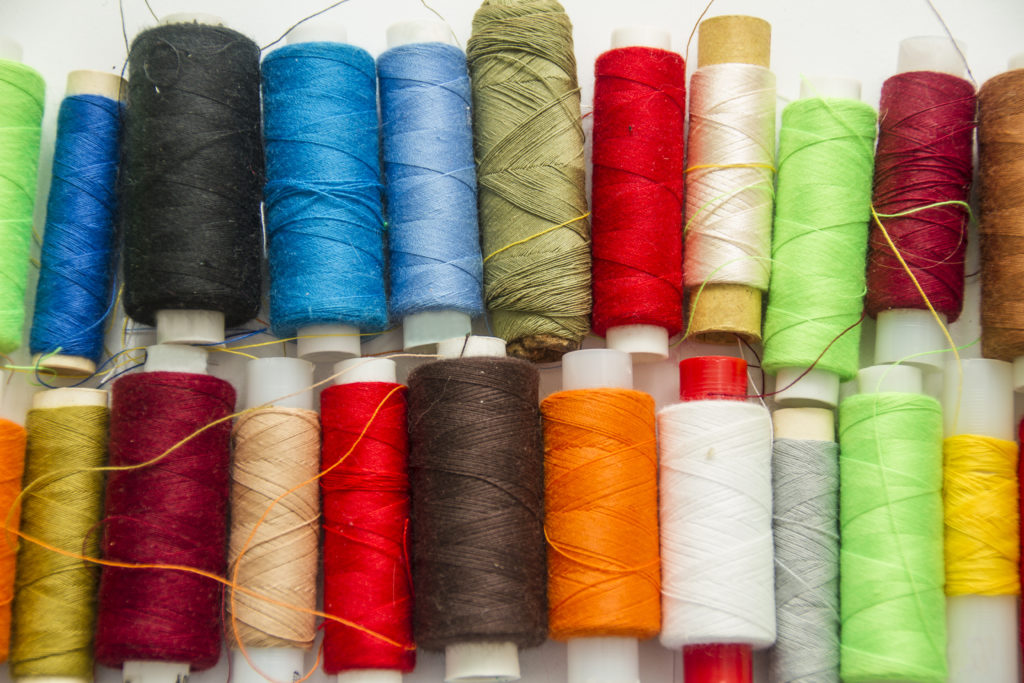Tips For Selecting The Best Thread To Sew On Labels

A chain is only as strong as its weakest link, and sew-on labels are only as strong as the sewing thread used to attach them. Whether you’re sewing labels into clothing to mark your own fashion brand or simply because you want to make sure your child never loses his or her sweater at school, knowing which thread is best for the item of clothing as well as the label can mean the difference between a label that holds in place and one that comes off in the wash and is lost forever.
Sewing threads are available in a wide range of materials and thicknesses, and not all threads are right for all types of fabrics and all types of labels. A thread’s thickness usually is marked by a number. Although there are many numbering systems used in the sewing industry, typically the higher the number is, the thicker the thread will be. Sewing thread also comes in a variety of materials, such as cotton, polyester and silk.
You first instinct may be to look for a thread that matches the color of your garment and the label as closely as possible. Although color can be important if you want the stitching to be more or less invisible, there are other factors you should consider when choosing a thread. The wrong thread can unravel or even damage the garment over time.
How to Choose the Right Sewing Thread
Here are a few general tips to follow when choosing thread for a sew-on label:
- Cotton threads work best for materials that have little or no stretch to them, but polyester threads are best for sewing labels onto materials that are stretchy. Polyester threads have some stretch, making them a better fit for fabrics that have a bit of give to them.
- Choose a finer cotton or silk thread when sewing labels onto delicate woven fabrics such as those used in lingerie or sheer garments. Thicker or coarser threads can cause damage to these more delicate materials.
- Double-check to make sure that the thread you want to use is suitable for sewing machines, if you’re planning on using one. Otherwise, sew the label by hand with a needle if the thread isn’t appropriate for a sewing machine.
- Thicker, coarser materials require a thicker thread to ensure that the thread won’t unravel as the garment is put through its daily stresses.
- The color of your thread is not as important, but it still should be a concern. If the exact shade of thread to match your garment is not available, try to find a thread that is a shade or two darker. Lighter shades of thread will make the stitching appear much more obvious and potentially harm the garment’s appearance.
No matter what reason you have for using sew-in labels in your garments, you want them to stay put. That means choosing the thread that not only looks best when used in the garment, but also works best with the particular fabric of the garment. The next time you purchase sew-on labels from It’s Mine! Labels, take a moment to think about the type of thread you’ll be using to attach them to your clothing. You don’t want the thread you choose to be the weakest link in your garments.
